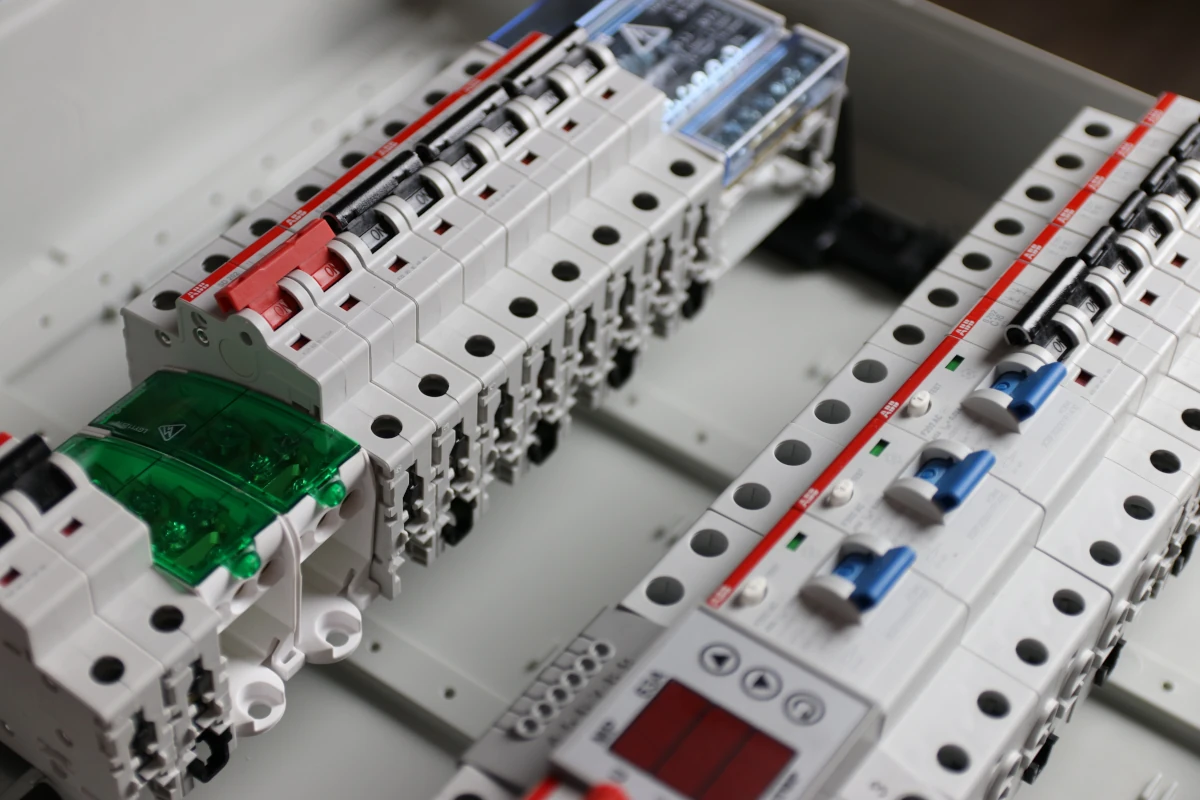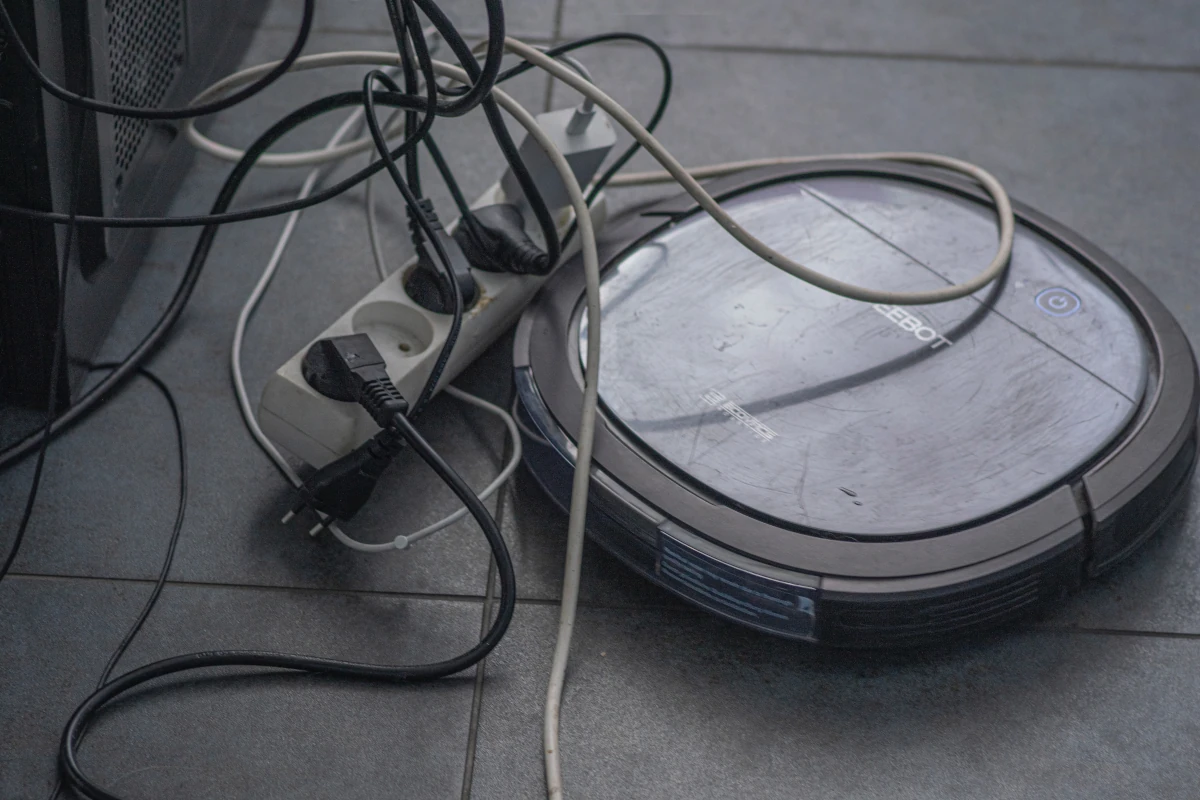Locating the doorbell circuit breaker is paramount when replacing your old doorbell with a smart doorbell or adjusting the ringing sound.
But, some of them, especially those installed in the 80s and 90s, are usually not labeled, making it challenging to work on the system.
If your doorbell breaker is not labeled, how do you identify it?
Here is what you do to identify your unlabeled doorbell circuit breaker
The location of the transformer determines the positioning of the doorbell circuit breaker. The transformer supplies power to the chime box/bell and steps down the voltage (usually 16-24V AC). The fastest way to identify the transformer is to use a non-contact voltage tester to locate which of the circuit breakers control the transformer or with trial and error by turning OFF individual breakers to identify which one controls your current doorbell.

Finding the circuit breaker is important to avoid any risk of getting electrocuted as you will have to identify the correct wire to be replaced with the new smart doorbell.
In this article, we will show you how to identify a doorbell break if yours is not labeled in this write-up. Let us dive into details.
Related:
- Can You Tell Someone Is Watching You On Ring Doorbell? (Must Read)
- Do Security Cameras Work If Unplugged? (Explained)
- How Many Years Will My Roomba Last? (Answered)
What breaker is the doorbell usually on?
There is no specific or dedicated circuit breaker that the doorbell is usually on. So, if you are solely looking for a doorbell breaker in your panel, you will not find it.
The electrical part of the doorbell uses a negligible current, usually 15-20 amp, so it will be combined with other circuits.
Because of its low current usage, the breaker is wired to a shared breaker switch. The breaker switch is often an existing one, and since the breaker does not require a lot of currents to function, it works well without affecting other devices using the same breaker switch.
Most circuit breakers coming from the main electrical panels are not labeled. Homeowners who frequently adjust their doorbell systems label theirs to identify them quickly next time they want to change something.
How do I identify my doorbell breaker?
We have seen that the transformer determines the location of the doorbell breaker, and its location is not specific. This transformer usually downs the 240v supply to 16-24 volts, or 6-8 volts for older doors, suitable for the breaker that requires little current to function.
Although the voltage quantity is below the recommended OSHA hazard level, you should work while the power supply is off as it can still electrocute you.
After turning off the power supply, here is how to identify the doorbell breaker:
- Locate the doorbell/chime
Locating the transformer makes it easy to identify your doorbell. And to locate the transformer, you must know where its low-voltage wiring leads to the push buttons of the doorbell from the outside. This approach applies when you are dealing with hardwired push buttons.
For hardwired push buttons, you will likely find the doorbell at the house’s main entrance. This location is ideal as the bell can be heard clearly from different locations in the house. The doorbell can be visible, hidden behind the wall, or concealed. So, stay open-minded about these options.
When finding a chime that uses wireless pushbuttons, you have to rely on your hearing sense. It will be located in the area where it sounds loudest. Some of the common areas include the kitchen and the living room.
- Find the transformer
The transformer is connected to the doorbell with hardwiring for both wireless and hardwired doorbells. Following the wiring from the doorbell is the easiest way of finding it. Finding a transformer can be relatively easy or complex, depending on how the wiring is done.
It is easy when the wiring is exposed since you can easily follow the wires to lead you to the exact location. Also, those done from the adjacent rooms are easy to follow and locate the transformer.
However, if wiring is concealed with other circuits, it can take you a while to locate the correct one for the transformer. For the concealed wiring, the attic or basement are the best places to find the electrical box since it is where these wires get power supply from.
You will know you have located the transformer when you spot a small part, usually smaller than the baseball. Its color is silver or cadmium and has a rectangular shape.
- Locate the circuit breaker
After locating the transformer, the next step is to find the circuit breaker. This is the circuit feeding the transformer and is found in the breaker panel. Once you locate this circuit, you further follow it to the main panel.
Testing tools become handy at this point, and having an extra hand is even better. Look for a nearby light fixture and turn it on. Use your testing tool to test the circuit breaker. As we have mentioned, the transformer uses 120v AC. So, the person should look for the circuit that turns off the light fixture as you do the testing.
Alternatively, you can use a circuit breaker finder if there is a receptacle being fed by the circuit nearby. While using this method, plug in the sender of the circuit breaker finder into the receptacle. When you scan the receiver probe, you easily identify the correct breaker.
You know you have the correct breaker when your receiver probe increases its beeping frequency and has its light flashing rapidly. If you do not have someone to help you check for the breaker, we think a circuit breaker finder is the best tool for this work.
How do you turn off a doorbell circuit breaker?
For a doorbell to work, several electrical components are put together. If any of the components become faulty, it affects the entire system, which is the same as disconnecting it. Apart from the doorbell disconnection due to system failure, you can turn off yours quickly.
You can turn off your doorbell circuit breaker by removing the battery if it is wireless. But, when you have a wired doorbell system, you will need a screwdriver to carry out the task.
Here is how to turn off a doorbell circuit breaker using a screwdriver:
- Turn off the circuit breaker
As per the above section of the article, we should now be able to locate a doorbell circuit breaker. Turn off this breaker that supplies power to your doorbell. Sometimes, it can be used to power the doorbell alone or be used with other devices. You only have to flip the switch, it “OFF,” and nothing more.
- Remove the doorbell button
Here is when your screwdriver becomes handy. Once you have switched your breaker off, test where there is any flow of current, detected using a non-contact circuit tester. Then, if there is no current flowing, proceed with the next step.
Use your screwdriver to unscrew the hold button. Do not forget to unscrew the wires too from the back. If they cannot be unscrewed, use a wire cutter to cut them. Use electrical tape to wrap the wire to prevent having them naked.
We cover the wires because they can cause fire hazards when left naked. Check to see they are nicely covered before pushing them into wire holes. If you do not intend to reconnect your doorbell system, consider filling the holes with wood filler to prevent water and debris from getting in. Paint the area to give your wall a smooth finish and avoid having ugly marks that can affect its aesthetics.
- Remove the doorbell/chime
At this point, you will have decided to get over with the doorbell system. Remove the bell where it has been mounted and unscrew the wires as well. Since these wires also carry current that enables the system’s functioning, use electrical tape to cover their ends.
If the chime was mounted on a visible wall area, consider painting it to avoid leaving a patch. Of course, a patch will have formed since that part of the wall was covered by the chime. And the weather elements will have reacted with the chime and not the wall. If it has been concealed behind the wall, ensure you have discarded the materials used in concealing it or stored them appropriately to prevent accidents.
- Locate the transformer
We have learned how to locate the transformer in the above section. It is time to unscrew the wires supplying power from the transformer to the doorbell. These wires are long, and cutting them at any point should create efficiency.
The most important thing is to ensure you have covered the ends after cutting the wires. If a 120V AC outlet is used to supply power, consider unplugging the transformer. It ensures the power supply has been cut for the entire doorbell unit.
Is it necessary to power off the doorbell beaker?
If you are installing, adjusting, or turning off a doorbell, it is unnecessary to have your beaker off. Beakers do not require a lot of electrical currents to have the doorbell working. Although very little current flows, being too careful has never been bad.
The transformer converts the hazardous 120V into low and safe 12V, which cannot electrocute you and make your heart stop. If you do not want any current flowing as you work, powering off the door beaker is a brilliant choice.
Are you planning to work on your doorbell beaker but realize yours is not labeled? You can identify yours using the processes we have covered above. And, whenever you are working with electrical components, always be careful with how you handle them. It only takes a slight mistake to have a disastrous outcome.




